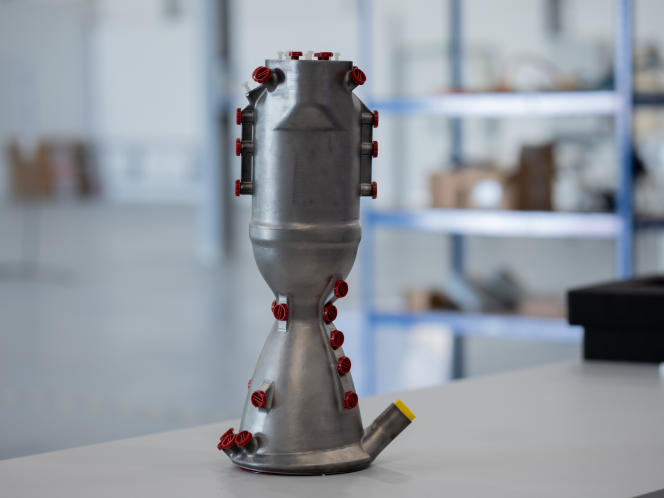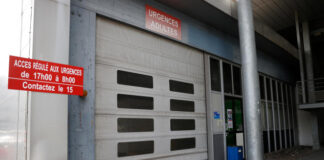“From 2027, we will produce 50 rockets per year, because we expect to do so many launches each year. At 23, Stanislas Maximin resolutely displays his ambitions. This space enthusiast created Venture Orbital Systems, a start-up based in Reims three years ago, offering launch services for nanosatellites. These shoebox-sized objects weighing less than 50 kilos were initially tested by laboratories or universities. With miniaturization helping, their power increasing and costs falling, they have become essential for telecommunications, defence, finance, agriculture or transport. In the space of ten years, from 2017 to 2026, the value of this microsatellite and nanosatellite market should increase fivefold, to reach 6 billion dollars (5.28 billion euros), according to Polaris Market Research.
Hence the idea of offering a whole range of services. Starting with a microlauncher to place these satellites in their position in low orbit, 600 kilometers from the Earth. It will be Zéphyr, 15 meters high, weighing less than 2 tons, which can carry up to 70 kilos of load, i.e. two to three satellites. The first test is scheduled for 2024, from the Saxavord space base in Scotland. Commercial flights will begin the following year. “Today, to send a 20-kilo satellite into space, it takes a year and a half, from contract signing to launch. With Zéphyr, it will be six months”, announces the founder of the start-up. In addition, the cost will be two to three times cheaper than the industry leader, the American Rocket Lab, at 35,000 dollars per kilo, with the aim of bringing it down to 25,000 dollars.
A “plethoric” offer
But the company is entering a highly coveted market. “The offer of microlaunchers is plethoric, no less than a dozen projects in Europe, as many in the United States, and those that already exist, such as the American Rocket Lab, Astra Space or Virgin Orbital, do not earn money warns Maxime Puteaux, consultant at Euroconsult. “There are niches of need, but I don’t think the demand can absorb the supply. »
This does not discourage the young leader, who plans to launch a week. “From 2028, more than 1,000 satellites will be sent into space each year. With our 50 shots, we’ll have about 15% of the market. Its objective is to join the top 3 manufacturers of microlaunchers in Europe, made up of the Germans Isar, RFA and the British Orbex.
In this perspective, Thursday, June 30, the company, renamed Latitude, announced a fundraising of 10 million euros, with around the table Crédit Mutuel Innovation, the Geodesic fund, Bpifrance and investors. This is the second operation; the first, carried out in 2020, concerned 1 million euros for this company supported by institutions in the sector such as the National Center for Space Studies (CNES) and the European Space Agency (ESA). And this, even if Stanislas Maximin had, at the start, no experience or training in space.
“He came to see us in June 2019 before he set up his company,” recalls François Alter, advisor to the president of CNES and deputy director of strategy. “His project interested us, because there are few of them in microlaunchers. We trusted him, on the condition that he stick to his objectives. It’s the case. This respect of commitments is for us the basic rule, because it avoids charlatans. His lack of technical skills in this area is compensated by the fact that he knows how to surround himself with teams with the necessary knowledge. As for age, this is also not an obstacle. “On the contrary, young people are go-getters who want to realize their dreams and, moreover, they are not the only ones we support,” admits Mr. Alter.
“We need a little less than 200 million to carry out this project”, estimates Stanislas Maximin, referring to the development of the company which, today, employs 60 employees – 80 by the end of the year – and which has just doubled its surface, with an additional 1,700 square meters. From 2024, a factory will be built on the 4 hectares of the site, which will lead to the creation of 200 additional jobs.
Alongside this fundraising, the start-up received the first copy of its rocket engine. Entirely manufactured by 3D metal printing, it was developed with the support of CNES and the participation of the Luxembourg SME Saturne Technology. Next step, testing. They will begin in October, at the ArianeGroup site in Vernon, in Eure.














